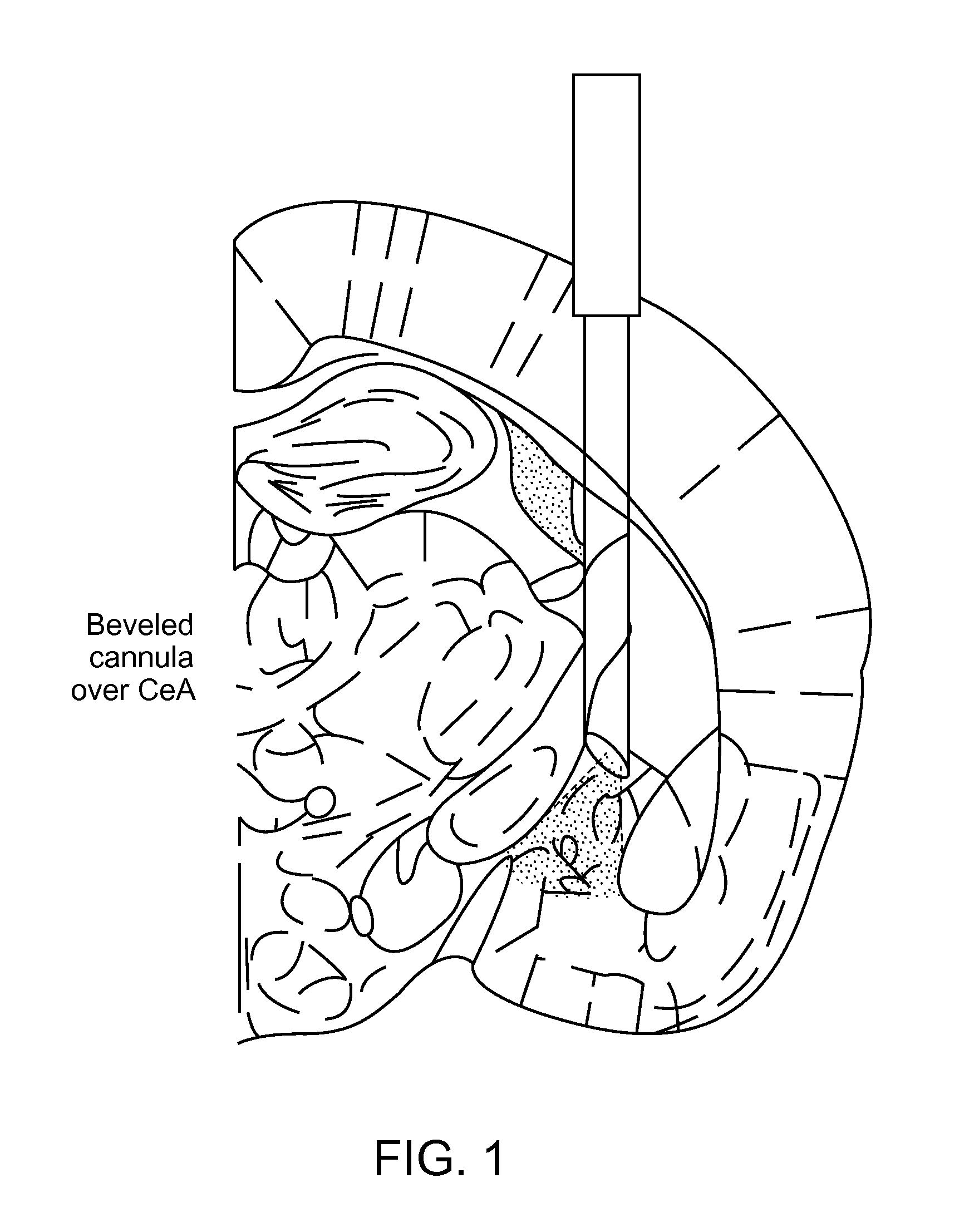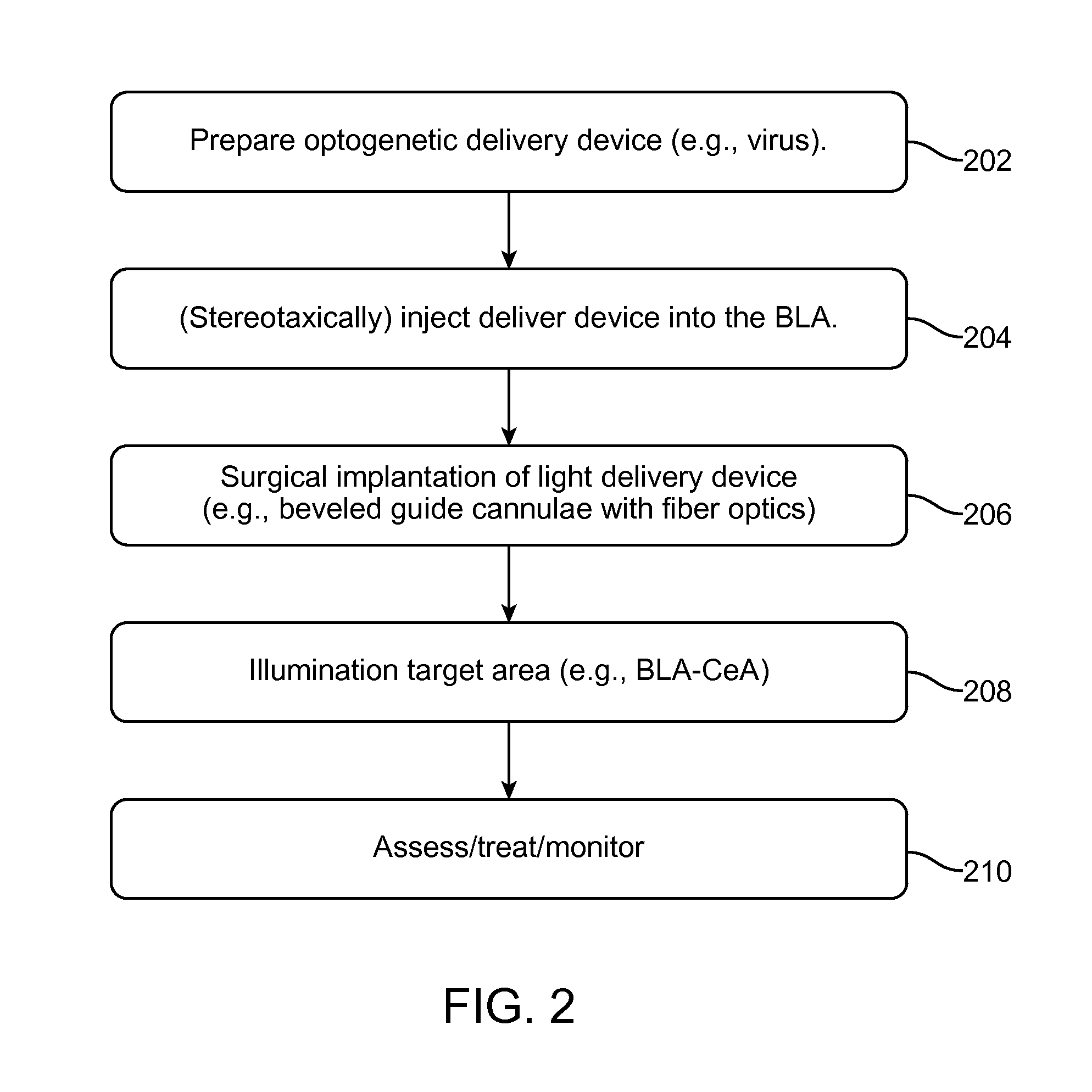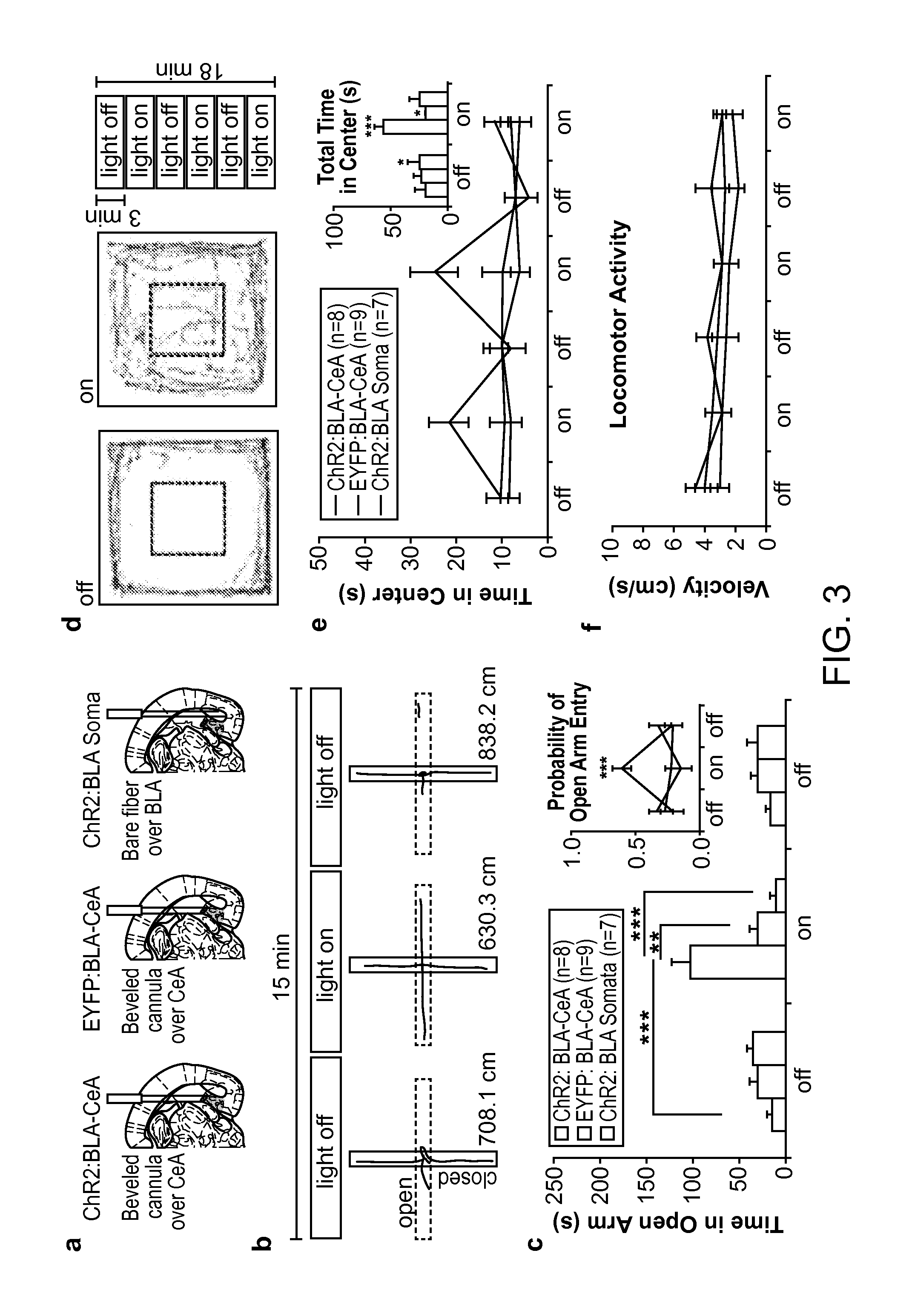Optically controlled CNS dysfunction
a technology of cns dysfunction and cns, applied in the field of optically controlled cns dysfunction, can solve the problems of inconsistent effectiveness, severe debilitation, impediment to the development of safe and effective treatments, etc., and achieve the effect of reducing the anxiety of the animal
- Summary
- Abstract
- Description
- Claims
- Application Information
AI Technical Summary
Benefits of technology
Problems solved by technology
Method used
Image
Examples
example experimental embodiments
Detailed Description and Example Experimental Embodiments
[0047]The present disclosure is believed to be useful for controlling anxiety states and / or symptoms of anxiety. Specific applications of the present invention relate to optogenetic systems or methods that correlate temporal, spatio and / or cell-type control over a neural circuit associated with anxiety states and / or symptoms thereof. As many aspects of the example embodiments disclosed herein relate to and significantly build on previous developments in this field, the following discussion summarizes such previous developments to provide a solid understanding of the foundation and underlying teachings from which implementation details and modifications might be drawn, including those found in the Examples. It is in this context that the following discussion is provided and with the teachings in the references incorporated herein by reference. While the present invention is not necessarily limited to such applications, various ...
examples
[0064]Introduction
[0065]Anxiety is a sustained state of heightened apprehension in the absence of immediate threat, which in disease states becomes severely debilitating'. Anxiety disorders represent the most common of the psychiatric diseases (with 28% lifetime prevalence)2, and have been linked to the etiology of major depression and substance abuse3-5. While the amygdala, a brain region important for emotional processing9-17, has long been hypothesized to play a role in anxiety18-23, the neural mechanisms which control and mediate anxiety have yet to be identified. Here, we combine cell type-specific optogenetic tools with two-photon microscopy, electrophysiology, and anxiety assays in freely-moving mice to identify neural circuits underlying anxiety-related behaviors. Capitalizing on the unique capability of optogenetics24-26 to control not only cell types, but also specific connections between cells, we observed that temporally-precise optogenetic stimulation of basolateral amy...
PUM
| Property | Measurement | Unit |
|---|---|---|
| frequency histogram | aaaaa | aaaaa |
| current step | aaaaa | aaaaa |
| spike frequency | aaaaa | aaaaa |
Abstract
Description
Claims
Application Information
 Login to View More
Login to View More - R&D
- Intellectual Property
- Life Sciences
- Materials
- Tech Scout
- Unparalleled Data Quality
- Higher Quality Content
- 60% Fewer Hallucinations
Browse by: Latest US Patents, China's latest patents, Technical Efficacy Thesaurus, Application Domain, Technology Topic, Popular Technical Reports.
© 2025 PatSnap. All rights reserved.Legal|Privacy policy|Modern Slavery Act Transparency Statement|Sitemap|About US| Contact US: help@patsnap.com



